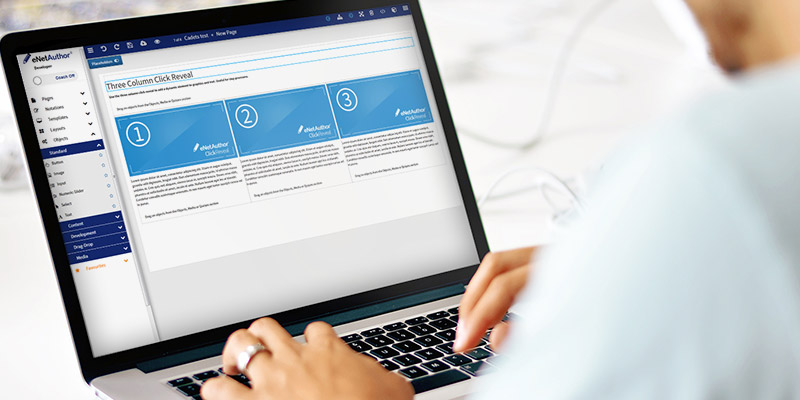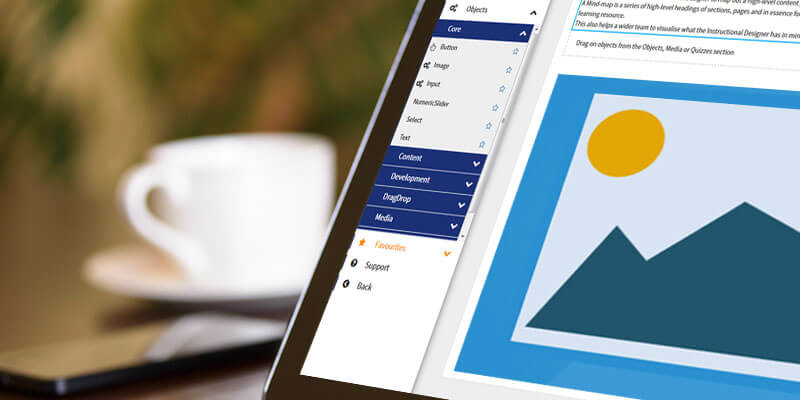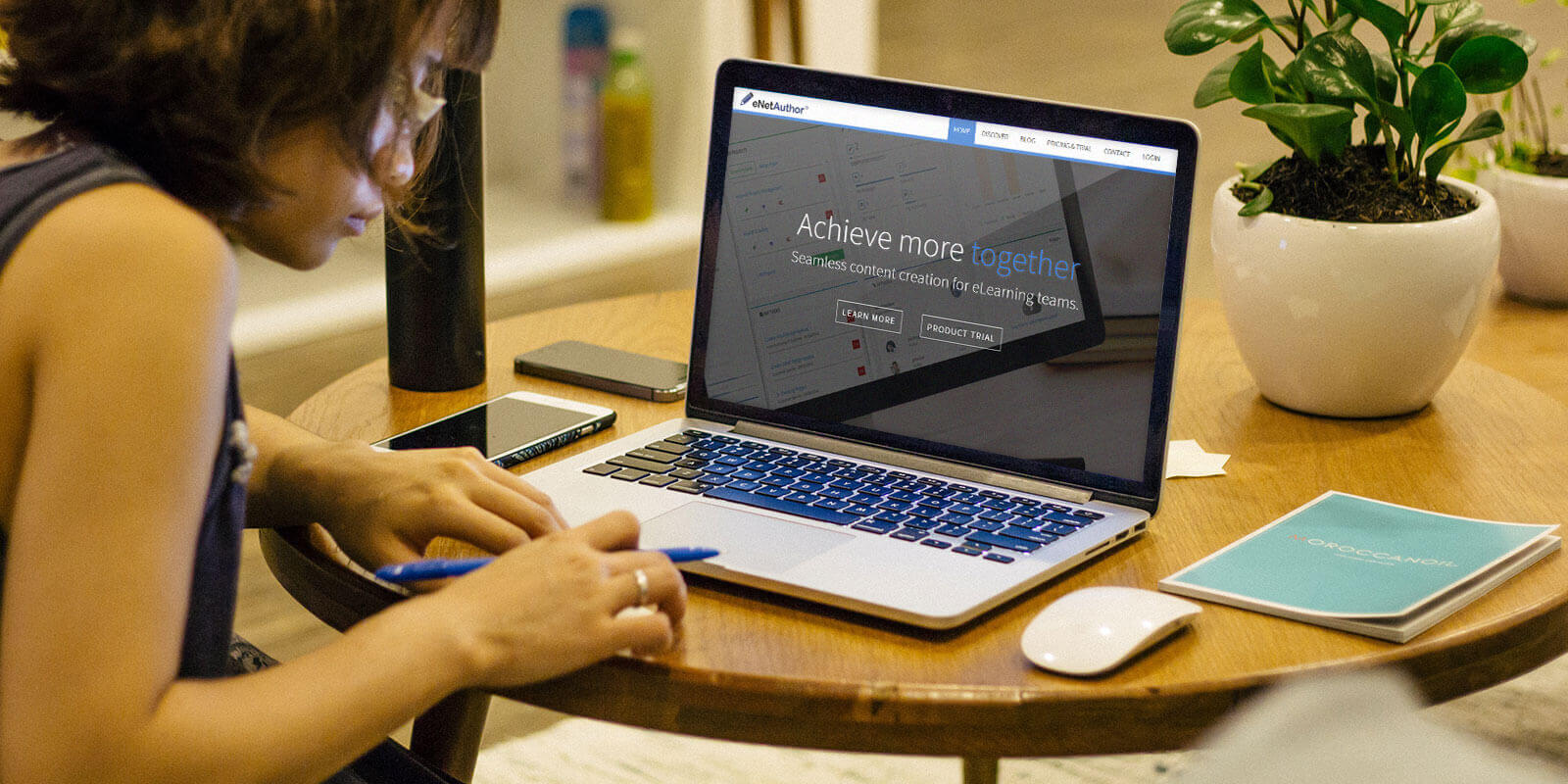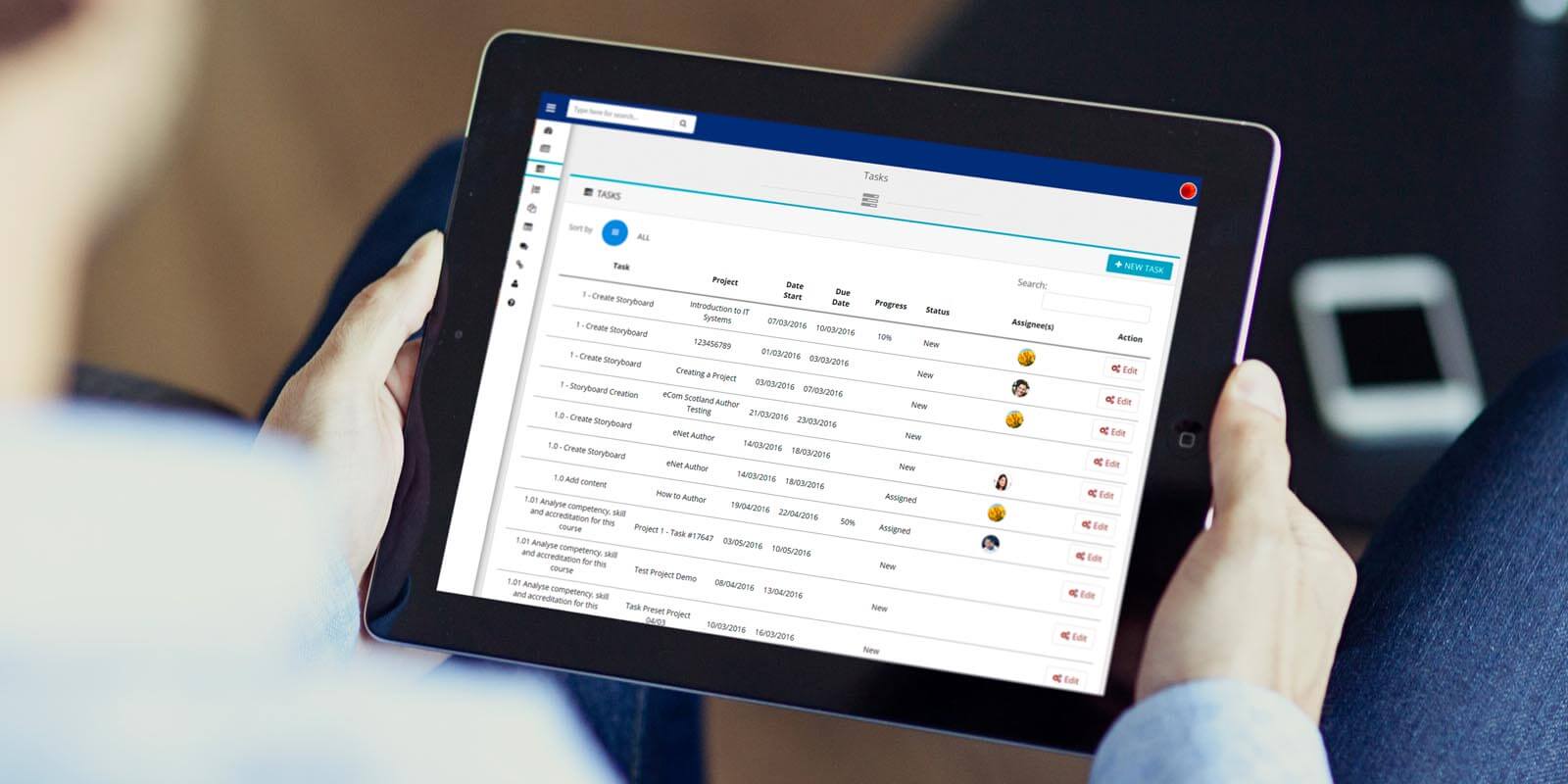Getting Started With Instructional Design
Applying robust instructional design to eLearning development will ensure the content is effective and engaging for learners.
Instructional design is the systematic process of analysis of learning needs and goals and the development of a delivery system to meet those needs.
There are many methods of instructional design but the most common is ADDIE.
ADDIE – is where the ID process is defined as:
- Analysis
- Development
- Implementation
- Evaluation

Analysis - Setting the objectives
Identifying the key instruction or knowledge statements can be tricky, especially if you don’t know the subject area. The Subject Matter Expert will be able to give guidance on what needs to be covered.Read more about working with Subject Matter Experts
Design
Timing
Setting the notional learning time for your project is a good way of deciding on how many or how much information can be covered.
Instructional designers usually give around 15 mins to each objective with each page in a topic having a learning time of between 2- 3 mins depending on interactivity.
Making this assessment lets you see if your project is getting too big for the delivery time your stakeholder has with the audience.
Objectives
Objectives are statements that describe the knowledge, skills and understanding that learners have to achieve, and often more importantly can demonstrate at the end of the course.
It can be useful to create a mind map with these objectives as focal points, expanding as you define the topics and interactivity.
Develop your wider objectives by:
- collecting content on your identified subject. This may come in numerous formats e.g. marketing, promotion brochures, diagrams, written instructions, manuals, training materials, PowerPoints, video, audio files, questionnaires, surveys, and any pre-existing tests, simulations or scenarios.
- reviewing the content to select images, illustrations, key text paragraph, useful questions, video or audio.
- working with a subject matter expert to agree topic flow and areas to be covered, Discuss any further information they may have and check any copyright clearances that might be required to re-use any media objects. Learn more about Working with SMEs.
- inserting the topic flow into your mind map so that you can check the balance of the course. If your topics are heavily weighted towards one of the objectives, you might want to rework this or source more information for the other objectives to balance the course.
Development - Creating Your Storyboard
Once you have the page structure defined its time to start working on your storyboard. This is the schematic representation of every screen page in your project.
The storyboard is effectively the specification that you want your stakeholder to sign-off before you go into the development stage. Many new designers want to skip out this stage and then realise after a number of projects that go wildly wrong why this stage is very important.
Implementation - Sign Off Process
This sign-off process is an iterative process and it is better to have changes here than to change after all the development work is completed.
Evaluation
Continued evaluation is essential to the success of all projects. Only by doing so can you ensure that the project will ultimately meet defined objectives.
Working With Delivery Constraints
All organisation have constraints of some kind when delivering on-line projects. It is key to good ID to identify these constraints so that the users experience is not impacted upon by delivery issues.
It is also important to check the design on the browsers the audience will be using to ensure consistency of look, feel and functionality.
Following this model for Instructional Design will allow your organisation the best possible start towards achieving a perfectly executed project.
eNetAuthor With Built In Storyboard Tool - FREE Trial
eNetAuthor has a built in storyboard tool with the ability to track the sign-off process.
It also allows you to:
- track the changes and reviews
- expand in the storyboard by adding some of the functionality where the stakeholder needs more explanation of how the interactivity is going to apply within the final design identify the page layouts so templates can be created










